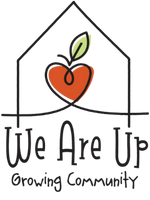
There is an impending crisis in long term housing and care for adults with autism and other disabilities
“Our model emphasizes belonging and inclusion. We are focused on building relationships and allowing more people to discover the gifts and contributions of populations that are too often silenced rather than celebrated.”
-Mary Keehn, We Are Up Founder
We Are Up is needed because there is an impending crisis in long term housing and care for adults with autism and other disabilities.
According to California’s Department of Developmental Services, for every 40-year-old with autism in 2020, our communities can expect at least 27 40-year-olds with autism by 2054 (Autism Society San Francisco Bay Area Report, 2020).
Autism is a growing concern
Autism prevalence keeps rising. The CDC’s latest surveillance (2022 cohort, published 2025) estimates 1 in 31 children age 8 has ASD; California’s site was as high as 1 in 19. Those cohorts are the adults of the 2030s–2040s. CDC
California’s Department of Development Services (DDS) caseload shows rapid Autism spectrum disorder growth. In FY 2023–24, 196,756 Californians with ASD were served by DDS, up 156% in 10 years; adults are a growing share of that caseload. Department of Developmental Services
Forward pressure persists. Earlier California modeling (Autism Society SF Bay Area) projected a steep rise in mid-life autistic adults through 2054; while older, it remains directionally consistent with today’s caseload trends. Autism Society San Francisco Bay Area
Families need more sustainable caregiving options.
Caregivers nationwide: The 2025 AARP/NAC study finds 63 million Americans are family caregivers—nearly 1 in 4 adults—up sharply from 2020. AARP
In California, most people with Intellectual and Developmental Disabilities (I/DD) still live with family. State planning and survey work indicate ~80% of people with I/DD live in a family home; among regional center consumers conserved by someone other than DDS, about 80% live with family. These patterns underscore heavy reliance on aging parents. scdd.ca.gov
Humboldt County is disproportionately impacted.
Higher disability and aging shares than the U.S.: In Humboldt County, 14.3% of residents under 65 report a disability (U.S.: 9.1%) and 20.4% of residents are 65+ (U.S.: 17.7%), increasing demand on a rural service network. (2019–2023 ACS QuickFacts). Census.gov
Housing options for seniors and people with disabilities are expensive, oversubscribed, and isolating
Care costs keep climbing. The 2024 Genworth/CareScout survey reports the national median assisted living cost rose 10% to $70,800/year; in California the median is $88,200/year (up 18% YoY). Nursing home private rooms in CA average $182,135/year. CareScout
Affordable housing is out of reach for many disabled adults. The TAC Priced Out data show Supplemental Security Income (SSI) recipients cannot afford modest one-bedroom rents anywhere in the U.S., underscoring systemic affordability barriers for people with disabilities. TAC
Public supports don’t meet demand. States continue to maintain Home & Community Based Services waiting lists for people with I/DD and other groups—evidence of oversubscription of community supports. KFF
Loneliness/social isolation are common among people with disabilities and carry major health risks: ~29% higher risk of heart disease, 32% higher risk of stroke, and increased premature mortality comparable to smoking. The Surgeon General also notes ~50% higher dementia risk with social isolation. HHS.gov

